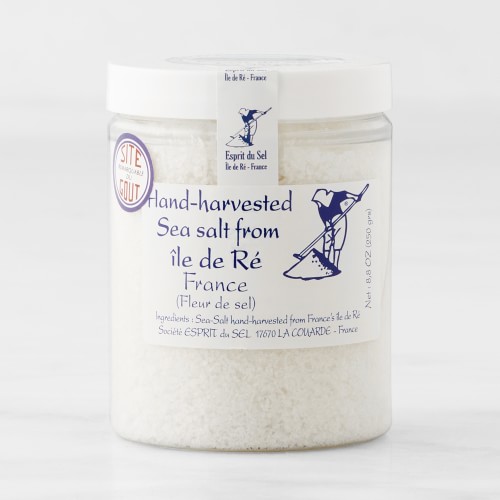
The key to a successful risotto lies in the ingredients. The requirements are simple: high-quality rice, sweet butter, fresh seasonal vegetables, good wine and flavorful stock.
The Rice
Good risotto requires a starchy rice. Some varieties have more starch than others do, and the Italian rices traditionally used for risotto hold their shape during cooking and remain al dente (tender yet firm to the bite) when ready.
The method of cooking risotto—adding hot liquid a little at a time as the rice slowly simmers—was developed because an outer layer of protein surrounds the starch. As the stock filters through tiny holes in this layer and cooks the rice, the starch is slowly released, thickening the cooking liquid and giving the dish its characteristic creaminess.
Do not rinse the rice before cooking as it causes the starch to begin releasing too soon.
Among the numerous varieties of rice for risotto, the four most readily available ones outside Italy are Arborio, Carnaroli, Vialone Nano and Baldo.
Arborio is most widely known because it was the first Italian rice exported on a largescale. Excellent for risotto, Arborio rice has large, plump grains with high starch content.
Carnaroli is also rich in soluble starch. Because of the consistency of the grains, their high starch content and their resistance to quick cooking, it is considered the best rice for risotto.
Vialone Nano has a grain that is shorter and thicker than other risotto rices, with an indentation on the end. It is excellent for risotto because it holds twice its weight in liquid.
Baldo, a newer variety, is lower in starch. It is good for dishes like rice pudding, salads and timbales and is also suitable for risotto.
Other Basic Ingredients
Unsalted butter is typically used for cooking risotto in northern Italy, as it is the traditional cooking fat of the region. Extra-virgin olive oil is good because it doesn't burn as quickly as butter, and the flavor is also delicious. A combination of butter and extra-virgin oil works well, too. Be sure to use a high-quality oil—the rice absorbs every flavor with which it comes into contact.
Onion is used in nearly every risotto, but green onions and leeks are good stand-ins. Other vegetables may be added along with the onion, and the size you cut them will vary depending on the cooking time of each vegetable.
Any wine that you would drink with pleasure can be used in risotto. Its bouquet must be respectable, for its flavor is readily absorbed into the rice. Never use chilled wine; the temporary chill disturbs the steady cooking of the rice, which can result in grains with hard centers.
Since risotto absorbs so much liquid while it cooks, the choice of the cooking liquid is critical. If you are making a risotto that contains meat, use beef or veal stock. A risotto with poultry added is best made with chicken stock, while a seafood risotto begs for fish or shellfish stock. In Italy, whole milk is used to cook the rice for sweet dishes, but fruit juice also works well.
Most risotto recipes call for stirring in butter at the end of the cooking because it gives the risotto a silky-smooth finish. This is optional. When using a top-quality rice with plenty of starch, there is enough creaminess to forgo the butter. Seasoning with salt and pepper should also be done just before serving. Sea salt and freshly ground pepper deliver the most flavor. Cheese is generally stirred in at the last moment. In Italy, cheese is never used in a dish with fish or shellfish, for fear that its strong flavor will overpower these more delicate ones.
The Right Pan
The equipment needed for making risotto is simple: a large pan for the simmering stock, a ladle, a pan for cooking the risotto and a spoon for stirring. The risotto pan should be wide and heavy bottomed. A broad surface will disperse the heat more evenly to allow uniform reduction of the liquid. A heavy bottom will help prevent scorching.
Adapted from Williams-Sonoma Collection Series: Risotto, Pamela Sheldon Johns (Simon & Schuster, 2002)
Related Tips:
Recommended Products
- $14.95













